Home Tags Posts tagged with "smartphone"
smartphone
Apple is believed to be secretly developing a “smart watch” with a touchscreen.
Chinese online sites have reported the computer giant is working with chipmaker Intel with a wrist worn gadget that has a 1.5 inch screen and uses Bluetooth to communicate with other gadgets, which could include an iPhone.
The “iWatch” will go on sale next year, the report claims.
Chinese site Tech.163 claims Intel has developed a Smart Watch that Apple is interested in.
The in question has a 1.5 OLED display with indium tin oxide, or ITO coated glass, and uses Bluetooth to communicate with a user’s iPhone.
It is believed the iWatch will run a version of iOS, the same software as the iPhone and iPad, allowing apps to be easily downloaded.

iWatch is believed to go on sale next year
Releasing a watch could also help it compete with Google, who claim they will release “Google Glass”, a headset with a screen, next year.
The rumors come after an independent attempt to create a smart watch, called Pebble, became a huge success online.
Its inventors used Kickstarter to try and raise $10,000 so they could develop it – but instead raised $10 million, and hope to begin production next year.
“Pebble is the first watch built for the 21st century,” say its creators.
“It’s infinitely customizable, with beautiful downloadable watchfaces and useful internet-connected apps.
“The watch will connect via Bluetooth, and alert users to incoming messages via vibrations – and apps bring Pebble to life.
“Cyclists can use Pebble as a bike computer, accessing the GPS on your smartphone to display speed, distance and pace data.
“Runners get a similar set of data displayed on their wrist. Use the music control app to play, pause or skip tracks on your phone with the touch of a button.”
HTC has unveiled two Windows Phone 8 handsets at an event in New York.
HTC has said that it intends to promote the 8X, which features a 4.3″ (10.9 cm) display, as its flagship device alongside the Android-powered One X.
The firm is also offering a smaller 8S model with a 4″ (10.2 cm) screen.
HTC’s share price has fallen more than 50% since February after the firm experienced weak sales of earlier models despite positive reviews.
Analysts have said the firm had a weak advertising campaign which was compounded by the fact that its South Korean rival, Samsung, had a much bigger marketing budget.

HTC has unveiled two Windows Phone 8 handsets at an event in New York
Nokia and Samsung have already shown off alternative Windows Phone devices which will launch after Microsoft releases the operating system.
HTC said the 8X would launch in 50 countries in early November across 126 mobile operators, while the 8S would be available in 52 countries with more than 146 operators.
Such detail was notably lacking at Nokia’s recent Lumia 920 launch, where it did not confirm the date or number of countries the smartphone would be sold in.
HTC made much of the devices’ design at the US event saying they had “a remarkably unique profile” thanks to the way their edges tapered, becoming thinner at the bottom, to make them feel thin in their users’ hands.
It said its top-end model featured an 8 megapixel camera on its rear supported by a dedicated chip for “faster focus speed and clearer, sharper shots”. The 2.1MP front camera – used for video chats – has also been designed to provide a wide-angle view.
The firm also hopes to distinguish both models by including Beats Audio sound equipment which it said offered “deeper bass and crisp vocals”. The handset maker owns a 25% stake in the company.
The 8X has an NFC (near field communication) chip for touchless payments, but the 8S does not.
The bet on Microsoft’s technology carries risks – the firm’s phone systems only accounted for 3.1% of global smartphone shipments in the April to June months, according to research firm NPD.
But one of the company’s analysts said HTC had an opportunity to grow that number.
“The reception from operators is quite good,” said Francisco Jeronimo, European mobile devices research manager.
“The market wants another alternative to Android as vendors don’t want to face the kind of problems that have arisen out of the lawsuits between Apple and Android device manufacturers – products being withdrawn or delayed.
“But HTC has to compete against Nokia and Samsung which also have Windows Phone 8 products.
“Nokia offers extra services on top such as its transport and augmented reality City Lens facility, while Samsung has a bigger marketing budget.”
Another analyst praised HTC for the industrial design and materials used to build its new devices, saying they would prove eye-catching on store shelves, but was not convinced that would be enough to improve its fortunes.
“HTC has had problems standing out in the Android market, and it could be even more difficult on Windows Phone 8 as Microsoft controls more of the experience on the platform,” said Gartner’s research director, Roberta Cozza.
“HTC needs to add further value to the ecosystem similar to what Nokia has done with its imaging and navigation resources.
“Unless that happens I don’t suspect things will change a lot for the firm.”
HTC’s press conference is the last of the big smartphone launches that had been scheduled ahead of the Christmas shopping season.
Apple has now unveiled the iPhone 5 in San Francisco.
Apple CEO Tim Cook, talking on the stage in San Francisco and beamed live to London, announced: “We’ve got some really cool stuff to show you, it’s an extraordinary time at Apple.”
The latest version of the iconic smartphone comes with a four-inch screen, an eight-megapixel camera which can take 28-megapixel panoramic shots, and is the thinnest iPhone yet, at just 7.6 mm.
All of which comes, for the first time, in a package made entirely in glass and aluminium.
Apple confirmed iPhone 5, available in black and white, has a four-inch display, – 1136×640 – which is the same width as previous models but taller.
It uses a new display which is 30 per cent thinner that previous handsets.
Phil Schiller, vice president of marketing, said: “It is designed to fit in the hand, and all of our software is being updated to take advantage of this display.”
The handset also has a new chip, the Apple A6, which is twice as fast as previous versions but 22% smaller.
iPhone 5 is expected to be the biggest selling in Apple’s history, with an estimated 8 million set to be sold according to some estimates.
The battle for domination of the mobile market has become increasingly heated recently with Apple’s competitors taking it on with a series of new products.

iPhone 5 will cost the same price as the iPhone 4S, $199 to $399 depending on size
The firm boasted the new handset has eight hours of 3G talk time, and a 225 hour standby time.
It also has an eight megapixel camera with a 3264×2448 sensor, and has improved its performance in low light, and a lens made from sapphire crystal.
The handset also now has a panorama mode to create wide shots.
“The ocean looks bluer, kids look happier,” joked Phil Schiller.
Phil Schiller also confirmed the handset has a controversial new connector.
“The iPhone from its start used the 30 pin connector, and it has served us well. A lot has changed and it is time for the connector to evolve – and out new connector is called Lightning.”
Apple also showed off a connector allowing people to use their existing chargers and accessories.
The handset will use iOS 6, and dumps Google’s maps for Apple’s own.
“We’ve built in free turn by turn directions,” said Scott Forstall of Apple as he demonstrated the new Apple Maps app.
“We use a cinematic camera angle to fly you around corners.”
Apple also showed off a 3D flyover feature allowing people to virtually fly over an area, and showed off the software “flying” over Big Ben in London.
A new app called Passbook also allows people to collect store cards, tickets and other information in a single app.
It can be used to show boarding passes on planes and for entry to concerts and sports games that support the codes.
Users can also share photo albums easily, and Apple’s speech recognition software Siri has been updated to give people sports scores, and even book restaurants.
Facebook has also been integrated into the service, allowing people to update their status via speech.
The handset will cost the same price as the iPhone 4S, $199 to $399 depending on size.
It will begin shipping on September 21st in US, Canada and several other countries, and customers can pre-order from this Friday.
A US court has ruled that Samsung should pay Apple $1.05 billion in damages in an intellectual property lawsuit.
It said several of Samsung’s devices had infringed iPhone-maker Apple’s software and design patents.
The jury rejected Samsung’s claims that several of its patents had been breached and awarded it no damages.
Apple may seek an import ban of some of its rival’s products, blocking them from the US market. Samsung has said it will appeal against the ruling.
“We will move immediately to file post-verdict motions to overturn this decision in this court and if we are not successful, we will appeal this decision to the Court of Appeals,” a statement from Samsung said.

A US court has ruled that Samsung should pay Apple $1.05 billion in damages in an intellectual property lawsuit
Apple and Samsung account for more than half of global smartphone and tablet computer sales.
The nine-person jury at the federal court in San Jose, California had to consider 700 questions about each side’s claim that its rival had infringed its intellectual property.
It deliberated for less than three days before coming to its unanimous decisions.
It rejected the South Korean firm’s claim that Apple’s intellectual properties were invalid. It added that Samsung was “wilful in its infringement” in many of the cases.
Not all of Apple’s claims were upheld – it had claimed a total of $2.5bn (£1.6bn) in damages. Samsung had sought $519m.
Apple said it applauded the court “for finding Samsung’s behaviour wilful and for sending a loud and clear message that stealing isn’t right.”
Samsung described the verdict as “a loss for the American consumer”.
“It will lead to fewer choices, less innovation, and potentially higher prices,” it added.
The jury ruled that some of Samsung’s handsets, including its Galaxy S 4G model, had infringed Apple’s design patents for the look of its iPhone including the system it uses to display text and icons.
However, it dismissed the allegation that the South Korean firm’s tablets had infringed the rectangular design used for Apple’s iPad.
It also found that all the disputed Samsung devices had copied the bounce-back response in the iOS system’s user interface, without paying a licence. This makes lists jump back as if yanked by a rubber band when pulled beyond their limit.
Another infringement involved use of Apple’s tap-to-zoom feature.
Samsung failed to convince the jury Apple owed it money for using technologies it claims to own including listening to music on a device in the background while carrying out another task; and integrating a phone, digital camera and email facility into a single device.
Michael Gartenburg, research director at Gartner, said the verdict could have major ramifications for the wider smart device sector.
“Apple patents being upheld will force the rest of the industry to both innovation and differentiation,” he said.
“That will be a good thing for consumers in the long run. Anyone who was even thinking about borrowing a technology or design from Apple will think twice about it now.
“Apple’s point was that it was possible to create an experience that doesn’t look like its designs and only Nokia and RIM Blackberry are really doing that right now.”
There has been a spate of lawsuits involving mobile-device makers, but this case had been viewed as one of the most significant to date.
This is because of the size of the damages involved, the likelihood it will influence the way future patent licenses are handled, and the insights it has given into both Apple and Samsung’s working practices.
Pictures of prototype iPhones and iPads that had never been seen before were released, and one of Samsung’s designers explained how she had created some of its app icon designs.
The offending Samsung models at the centre of the case have since been superseded by updates, reflecting the fast turnaround in product releases.
But Apple said it still intended to seek sales injunctions at a follow-up hearing on 20 September.
It may also seek to use this ruling to block other devices powered by Google’s Android software that it believes replicate elements of its user-interface, including current models by Samsung as well as other firms.
While Apple has scored a victory over Samsung, it remains one of the South Korean company’s biggest customers buying computer chips and, reportedly, screens from it to build the iOS mobile devices.
Facebook will allow app developers to advertise their products on its members’ mobile-device news feeds.
The network will charge a fee for every time users click on the ads to download the software from elsewhere.
Facebook had previously warned its financial health would suffer if it could not find ways to make money out its mobile users.
Its shares have nearly halved in price since its flotation, costing investors a total of about $50 billion.
Details of the latest move were revealed on the site’s developers blog.
It invites software developers to sign up to a “beta” test in which they can decide whether to target users of Apple’s iOS App Store or Android’s Google Play store.

Facebook will allow app developers to advertise their products on its members' mobile-device news feeds
A “power editor” option can also allow users to be targeted on the basis of what other apps they have downloaded within Facebook.
For example if they have played Disney’s Gardens of Times on their laptop via the network, they might then be offered other hidden-object games when using Facebook’s smartphone app.
If a user clicks on one of the links, they will be redirected to the appropriate app store where they can purchase the software.
Facebook will charge advertisers for every click made, and allows them to set a maximum budget.
The move is Facebook’s latest effort to make money from its mobile users.
It said it had 543 million active members using the site via a mobile phone or tablet at the end of June.
It has previously experimented with a number of other formats, including paid-for “Pages You May Like”.
It also introduced Sponsored Stories to its mobile app earlier in the year.
These are posts created by an advertiser that appear if a “friend” or page the user is connected to shares the material. By paying a fee, the business or organization can increase the likelihood their posts will be seen.
The site’s founder, Mark Zuckerberg, said it was making about $500,000 worth of sales through mobile Sponsored Stories every day at the end of June.
“People who use our mobile services are more active Facebook users than people who only use our desktop services,” Mark Zuckerberg said, explaining why it was important for his firm to focus on the sector.
“On average, mobile users are around 20% more likely to use Facebook on any given day.”
The firm’s chief financial officer, David Ebersman, added that daily web views in some developed markets had started to decline in favor of mobile use.
He said this could be why it was experiencing “flat” payment revenues – cash raised by taking a cut of fees charged on its site.
Although Facebook does allow users to download and play games on its mobile apps, most have ignored the option and download third-party titles via Apple or Google’s stores, even if they first heard about the software via Facebook.
“In the past 30 days, we have sent people to the Apple App Store and Google Play 146 million times, via clicks from channels such as news feed, timeline, bookmarks and App Center,” Facebook said in its developers blog.
Georgie, the first smartphone designed for blind people, has been recently launched in UK.
Georgie, as the device is known, has a voice-assisted touchscreen and offers a variety of apps to help complete tasks such as catching a bus, reading printed text and pinpointing location.
The phone was designed by blind husband-and-wife team Roger and Margaret Wilson-Hinds from Peterborough.
It was named after Margaret Wilson-Hinds’ first guide dog.
The couple run a not-for-profit social enterprise Screenreader.
The handset is powered by an Android operating system and uses existing Samsung handsets such as the Samsung XCover and Galaxy Ace 2.
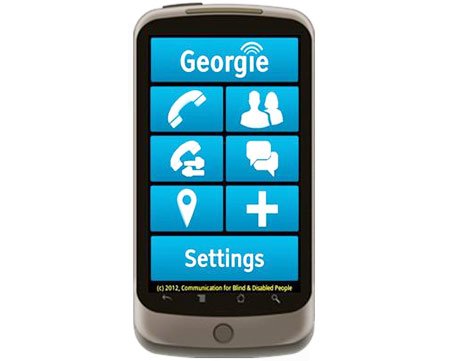
Georgie has a voice-assisted touchscreen and offers a variety of apps to help complete tasks such as catching a bus, reading printed text and pinpointing location
“I was able to send my very first text just earlier this year thanks to Georgie,” said Roger Wilson-Hinds.
“It’s exactly the type of digital experience we want to make easily available to people with little or no sight. It is also going to help solve everyday problems for blind people so they can be more confident about navigating the real world and become independent,” he said.
Robin Spinks, principal manager for digital accessibility at the Royal National Institute of Blind People, said: “Research continues to show that many blind and partially-sighted people struggle with the complexity of today’s smartphone technology.”
“Georgie is to be commended for allowing users to access the features of a range of modern smartphones in an easy-to-use and accessible manner,” he added.
The smartphone lets users dial a number with the voice-assisted touchscreen and uses speech input to send text messages.
Other apps are available in three different bundles; travel, lifestyle and communicate. Each bundle costs £24.99 ($40).
The phone is being distributed by Sight and Sound Technology, a firm which provides hardware and software to blind and visually- impaired people.
It is available from £299 ($475) or, for those with existing Android smartphones, a downloadable version can be purchased from Google Play, priced at £149 ($235).
It comes pre-loaded with a data SIM card. Users with pre-existing phone contracts can have it transferred to the new device or install a pay-as-you-go SIM card.
In the UK almost two million people are living with sight loss, with 360,000 registered as blind.
Giant tech company Apple has been ordered to pay damages to rival Samsung Electronics by a court in the Netherlands.
The court said that Apple had infringed a patent held by Samsung relating to the way phones and tablet PCs connect to the internet.
Apple, which recently became the world’s most valuable firm, has been facing various legal issues.
In a separate case, it was fined $2.3 million in Australia for its claims on 4G capabilities of the iPad.
And it is still not clear how much it may have to pay to Samsung in damages.
The Dutch court did not specify any amount, but the damages will be calculated based on sales of Apple’s iPhone and iPad in the Netherlands.
“Samsung welcomes the court’s ruling, which reaffirmed Apple’s free-riding of our technological innovation,” the South Korean manufacturer said.
“In accordance with the ruling, we will seek adequate compensation for the damages Apple and its products have caused.”
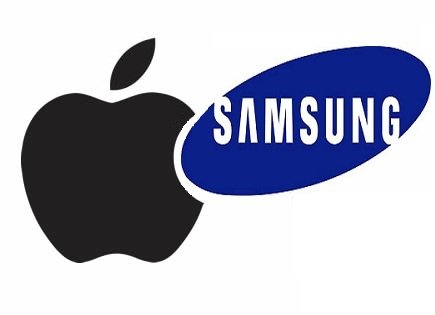
Apple has been ordered to pay damages to rival Samsung Electronics by a court in the Netherlands
Samsung had claimed that Apple had infringed four of its patents. However, the Dutch court said that only one of those had been breached.
Apple and Samsung are two of the biggest manufacturers of smartphones and tablet PCs in the world.
However, the two firms have been involved in dozens of patent cases and disputes relating to designs of their respective products.
Analysts said that with so many cases being fought by the two firms in different countries, neither of the parties may emerge as the overall winner.
Last month, a judge in the US ordered the chief executives of both the firms to meet to try to settle their legal differences.
But the talks did not lead to any agreement and Apple has since sought a ban on sales of one of Samsung’s tablet computers and the latest range of its Galaxy smartphones.
Apple had enjoyed an early lead in the smartphone and tablet PC market with the launch of its iPhone and iPad devices.
However, Samsung has been steadily increasing its market share in the sector with the introduction of new gadgets.
Analysts said that given the increased competition, the two firms had been using the legal battles as a way to stop each other from increasing their market shares.
“Given that they are number one and two in the market right now, they are going to use any possible tool to slow down each other and patents could be one of those tools,” said Melissa Chau of IDC Asia Pacific.
However, she said that given the amount of time, money and energy that the two firms have spent on fighting these cases, they were likely to find a solution in the long run.
“In the past, when we look at how these things have evolved, they get settled in due course of time and businesses move on.”
There was more bad news for Apple.
A court in Australia has ruled that the firm had misled consumers with its claims over the capability of the latest version of the iPad to connect to Australia’s fourth generation (4G) cellular networks.
The court said that Apple had broken the country’s consumer laws by implying that the newest version of the iPad could connect with the networks, when it could not.
“The conduct concerned was deliberate and very serious,” Justice Mordy Bromberg was quoted as saying by the AFP news agency.
“It exposed a significant proportion of Australian consumers of tablet devices to a misleading representation.”
In addition to the $2.3 million fine, Apple was also asked to pay 300,000 Australia dollars ($305,000) in court costs.
A new technology that will enable people to withdraw money from cash machines (ATM’s) using their smartphone has been unveiled.
Customers who use the Royal Bank of Scotland (RBS) or NatWest mobile banking app can now request cash, up to £100 ($160), via their smartphone.
They are given a six-digit code to enter into an ATM to release the cash.
A similar system has been developed by cash machine operator NCR. This requires users to scan a barcode to withdraw the money.
The services are the latest developments in a long-predicted move towards the smartphone becoming a digital wallet.
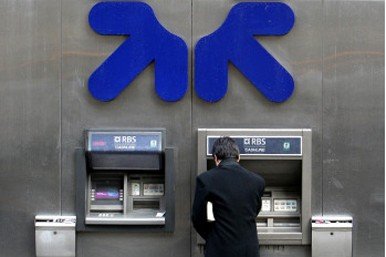
Customers who use the Royal Bank of Scotland (RBS) or NatWest mobile banking app can now request cash, up to £100 ($160), via their smartphone
RBS said that its new system would help customers who had forgotten their bank cards, or who wished to send cash to family members in a hurry.
It would also allow the people to leave their wallets at home in favor of taking a mobile phone, it suggested.
“It is a really simple and secure way to help our customers get cash whenever and wherever they need it,” said Ben Green, head of mobile at RBS and NatWest.
The service is available to customers who have downloaded the bank’s free app and use the 8,000 RBS, NatWest or Tesco branded ATMs in the UK. Some 2.6 million people have installed it on their smartphone so far, the bank said.
At present, customers using a card can withdraw up to £300 ($480). Initially the limit on the cardless withdrawal will be £100 ($160).
Access to the app requires a password, and the withdrawal code will be hidden until the user taps the screen. This is aimed at preventing thieves from looking over the user’s shoulder to steal the code.
The system is an extension of a RBS service that allowed people whose card had been stolen to access emergency cash from an ATM.
The bank is also unveiling a system which allows customers to make charity donations at its ATMs.
In a separate development, NCR has announced that it has developed software that allows people to scan a barcode on their smartphone at an ATM to release an amount entered in their smartphone.
It is looking for banks and building societies to adopt the software.
New reports have suggested that Facebook is to launch its own smartphone by next year.
The New York Times cited unnamed sources, including Facebook employees, suggesting that the network had been hiring several smartphone engineers.
Facebook recently admitted it was struggling to make money out of its growing mobile audience.
The company, which recently floated on the stock market, has also just launched its own mobile app store.
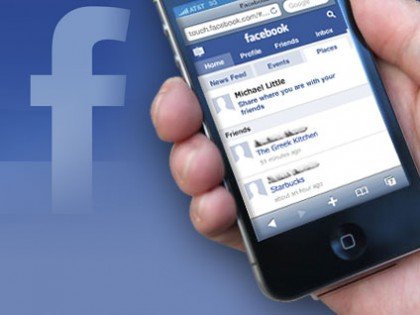
New reports have suggested that Facebook is to launch its own smartphone by next year
The App Center currently offers links to Facebook-enabled apps within Apple’s iOS and Google Android stores but developers will soon be able to write apps to be placed exclusively in Facebook’s store.
According to the New York Times, Facebook has hired experts who worked on the iPhone and other smartphones.
It quoted a Facebook employee as saying the site’s founder Mark Zuckerberg was “worried that if he doesn’t create a mobile phone in the near future… Facebook will simply become an app on other mobile platforms”.
A Facebook smartphone has reportedly been in the works for some time.
In 2010, Techcrunch reported that Facebook was “secretly” building a smartphone – although this particular project is said to have broken down.
The company’s desire to enter the smartphone market could be a result of increasing pressure to improve the potential of mobile to make money.
In a statement for potential investors ahead of its initial public offering earlier this month, the company admitted it had concerns about more users accessing Facebook through their mobile – a trend which could make it more difficult to sell advertising.
A spokeswoman for Facebook said the company did not comment on speculation, and referred instead to a written statement.
“Our mobile strategy is simple: we think every mobile device is better if it is deeply social,” the statement read.
“We’re working across the entire mobile industry; with operators, hardware manufacturers, OS providers, and application developers to bring powerful social experiences to more people around the world.”
When Apple’s voice-activated assistant Siri has been asked over the weekend “What is the best smartphone ever?”, it appeared to favor the iPhone’s rival, Nokia’s Lumia 900.
But Siri now responds to the same question with a jovial: “Wait… there are other phones?”
Nokia has accused Apple of “overriding the software” after the quirk was noticed.
Apple would not confirm that a change had been made.
The Siri software, which is featured on Apple’s iPhone 4S, uses the computational search engine Wolfram Alpha to serve answers to some questions.
For a question such as “what is the best smartphone ever?”, Wolfram Alpha would pool available reviews and comment in order to come up with what it feels is the right result.
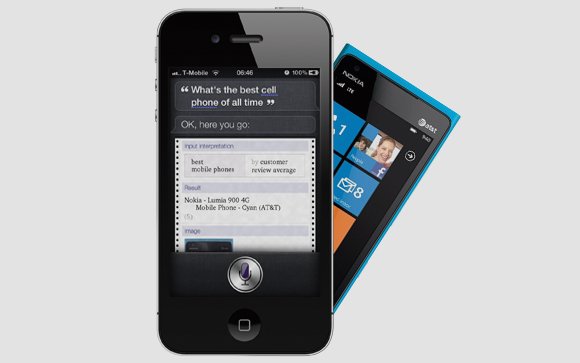
When Apple Siri has been asked over the weekend "What is the best smartphone ever", it appeared to favor Nokia’s Lumia 900
In this instance, the “best” result was determined by reviews on the website of US retailer Best Buy.
Nokia’s Lumia 900 came out on top.
However, when asked the same question, the software no longer attempts to search Wolfram Alpha to find its answer, instead producing a default answer.
Nokia spokeswoman Tracey Postill told the Sydney Morning Herald: “Apple position Siri as the intelligent system that’s there to help, but clearly if they don’t like the answer, they override the software.”
However, Nokia said Tracey Postill’s comments were “lighthearted” and “taken out of context”.
“We were certainly flattered and honored,” Nokia spokesman Doug Dawson added.
Intel confirms details of the first smartphone to be powered by one of its processors.
The XOLO X900, made by the Indian manufacturer Lava, will go on sale on 23 April priced at about 22,000 rupees ($420).
Lava has teamed up with Indian retail chain Croma to distribute the device across the country.
The move follows Intel’s previous failed attempt to break into the smartphone market.
A tie-up with manufacturer LG in 2010 fell flat, with no models going into production.
Meanwhile, chips designed by British-based ARM and the American firm Qualcomm now dominate the market.
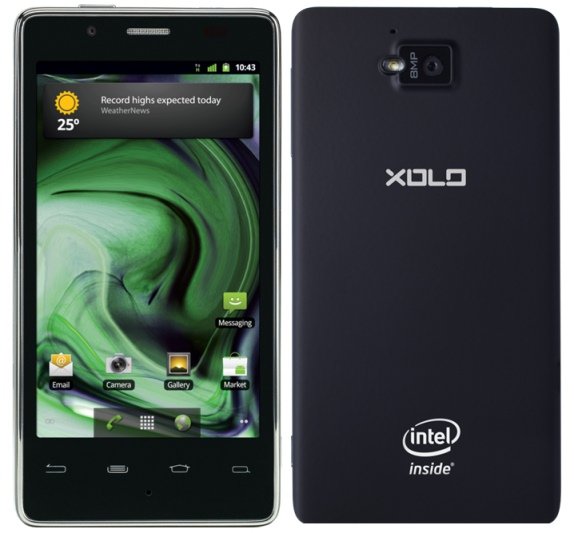
XOLO X900, made by the Indian manufacturer Lava, will go on sale on 23 April priced at about 22,000 rupees ($420)
Details of Intel-powered smartphones made by Motorola Mobility and Lenovo are expected soon.
The chip maker announced the partnerships at the Consumer Electronics Show in Barcelona in January.
Intel’s tie-up with Motorola Mobility is seen as most significant as the company is in the process of being purchased by Google.
The Atom-based chip promises more efficient battery consumption, as well as Intel’s own “hyper threading technology” allowing for enhanced multi-tasking.
The XOLO X900 – which features an 8-megapixel camera – will run initially on Android Gingerbread, Google’s smartphone operating system.
This will later be upgraded, Intel said, to the next incarnation of Android, Ice Cream Sandwich.
Lava has emerged as one of India’s fastest-growing companies since being founded two-and-a-half years ago.
“After our success in feature phones, with over 10 million happy customers in under three years, XOLO will be a differentiated player in the fast-growing smartphone segment,” Lava’s co-founder and director Vishal Sehgal said in a statement.
BlackBerry users in the entire world continue to have disruptions in service for a third consecutive day North American subscribers seem to be affected as well.
All those who use Customers using Research In Motion’s BlackBerry smartphones in Europe, the Middle East, and Africa had troubles accessing the e-mail, using messaging and Web surfing on Monday. On Tuesday things got better with only spotty access to e-mail, BlackBerry Messenger, and Web.
At the beginning the problems affected just the BlackBerry users from Europe, the Middle East, Africa and India. However, the problems spread to other parts of the globe including parts of South America.

On Wednesday morning subscribers in the U.S.A. and Canada started to complain about delayed e-mails, as well as email sent in groups.
Earlier RIM put the blame on the disruption to service that affected Europe, the Mideast, India, Latin America and Africa on a failed switch and backup. The company confirmed the problem had been solved, however, it might take some time to work through the backlog of data, which had not yet been sent to subscribers’ devices. Late on Tuesday E-mail started to trickle in for some subscribers.
“Although the system is designed to failover to a backup switch, the failover did not function as previously tested,” the company explained in a statement on Tuesday. “As a result, a large backlog of data was generated and we are now working to clear that backlog and restore normal service as quickly as possible. We apologize for any inconvenience and we will continue to keep you informed.”
It’s not very clear, just yet, if the issues plaguing customers overseas is what’s affecting the service in North America. One of the RIM representative was not available for comment in regards to disruptions in the North America.
RIM’s BlackBerry network architecture is its strength as well as its biggest weakness. Unlike other smartphone platforms, RIM routes all e-mail and messaging traffic through its BlackBerry servers in network operation centers throughout the world. This centralized architecture for the service means that additional encryption and security can be added to the messages that traverse the network. And for many corporate customers, this added security is the main reason they use the service.
But the architecture also means there are single points of failure throughout the network. This means that when there is a major infrastructure disruption, it can affect entire regions of service, potentially knocking out service for tens of millions of customers. By contrast competing smartphones, such as the iPhone and Google Android devices, do not suffer from the same types of outages because there is no single point of failure in the network.
 Prev12Page 2 of 2
Prev12Page 2 of 2












